DANUrB+ - ACROSS THE DANUBE: PONTOON BRIDGE BETWEEN HUNGARY AND SLOVAKIA – THE BUILDING CAMP IN SZOB
28-09-2021
In DANUrB+ project, the university partners in the field of teaching and researching, architecture and urban planning (in Bratislava, Budapest, Timisoara, Belgrade, Sofia, and Bucharest) play a leading role. The theme of several design subjects is related to the program and the proposed interventions are implemented together with the students in building summer camps and planned international creative weeks.
On the first weekend of the Ipoly building camp in July 2021, a symbolic project was implemented in response to the pandemic situation and the transformation of human relations: 45 participants built a 40-meter canoe bridge between Ipolydamásd, Hungary and Helemba, Slovakia. The municipality of Pest County and students from BME, Faculty of Architecture were responsible for the execution.
Throughout history, humanity has survived many pandemics and continued its life with renewed vigor. During the devastating plague in Venice between 1575-77, Venice decided to commission A. Palladio to design the church of Il Redentore. It could have been approached on a pontoon bridge. This kind of bond was an example for the students, when they dreamed of a canoe pontoon bridge connecting Ipolydamásd and Helemba through the Ipoly River.
The bridge was going to not only unite the countries, but also the families and friends living on the two banks of the river. The construction itself, followed by a picnic for Sunday’s inauguration, was an important moment in the lives of the locals that had become one of the highlights and became the dominant headlines during the past year and a half.
A few kilometers from the pontoon bridge, a day before the arrival of the camp, a ceremony was held, the foundation stone of the new road bridge was laid between Ipolydamásd and Helemba. The canoe bridge, called PONTIpoly, can be considered an important event, too.
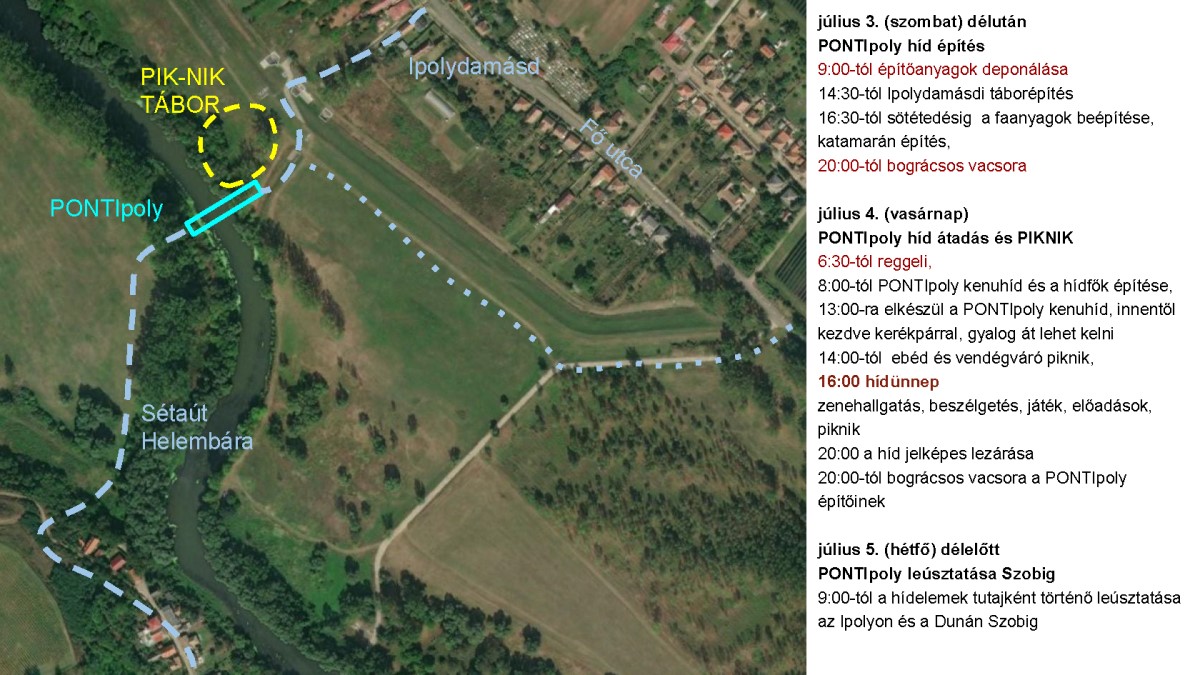
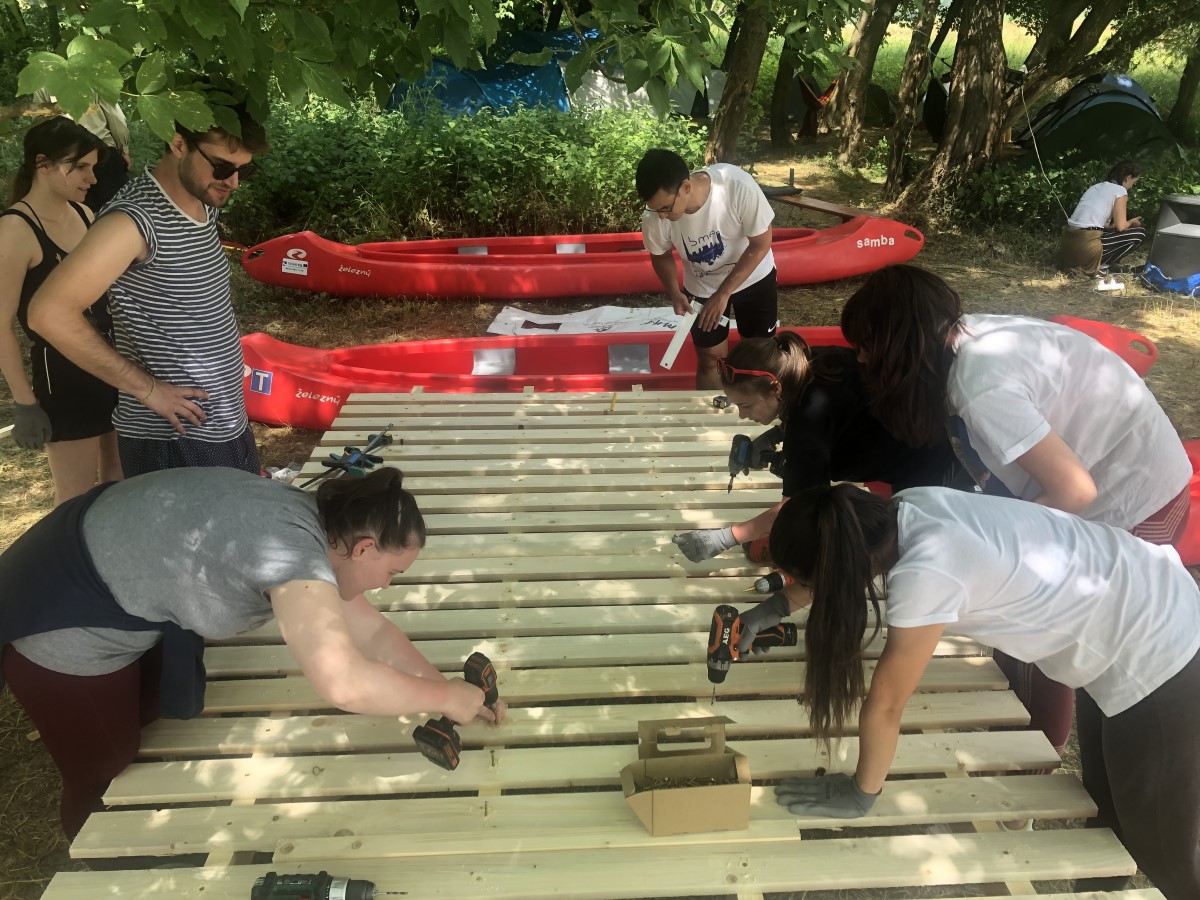

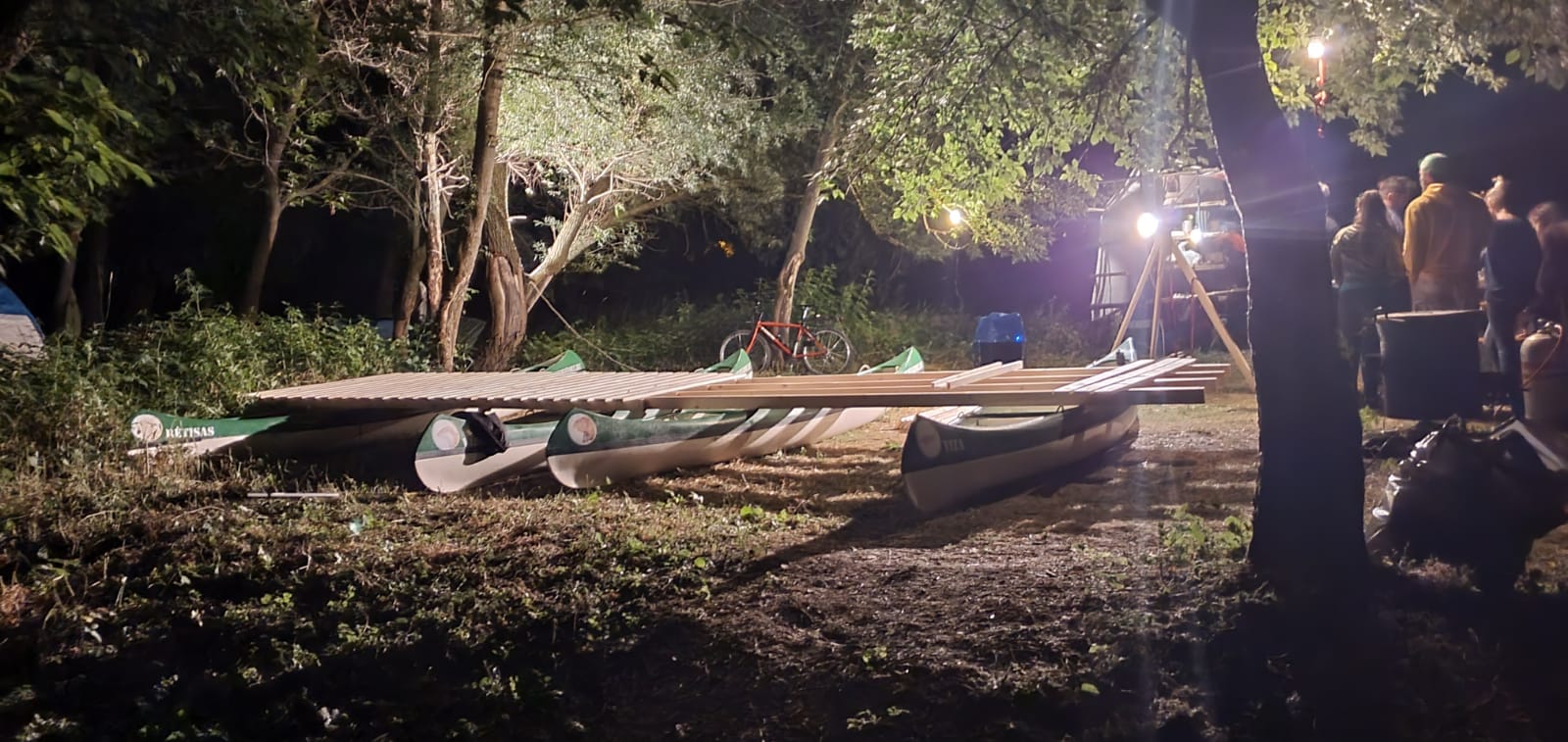
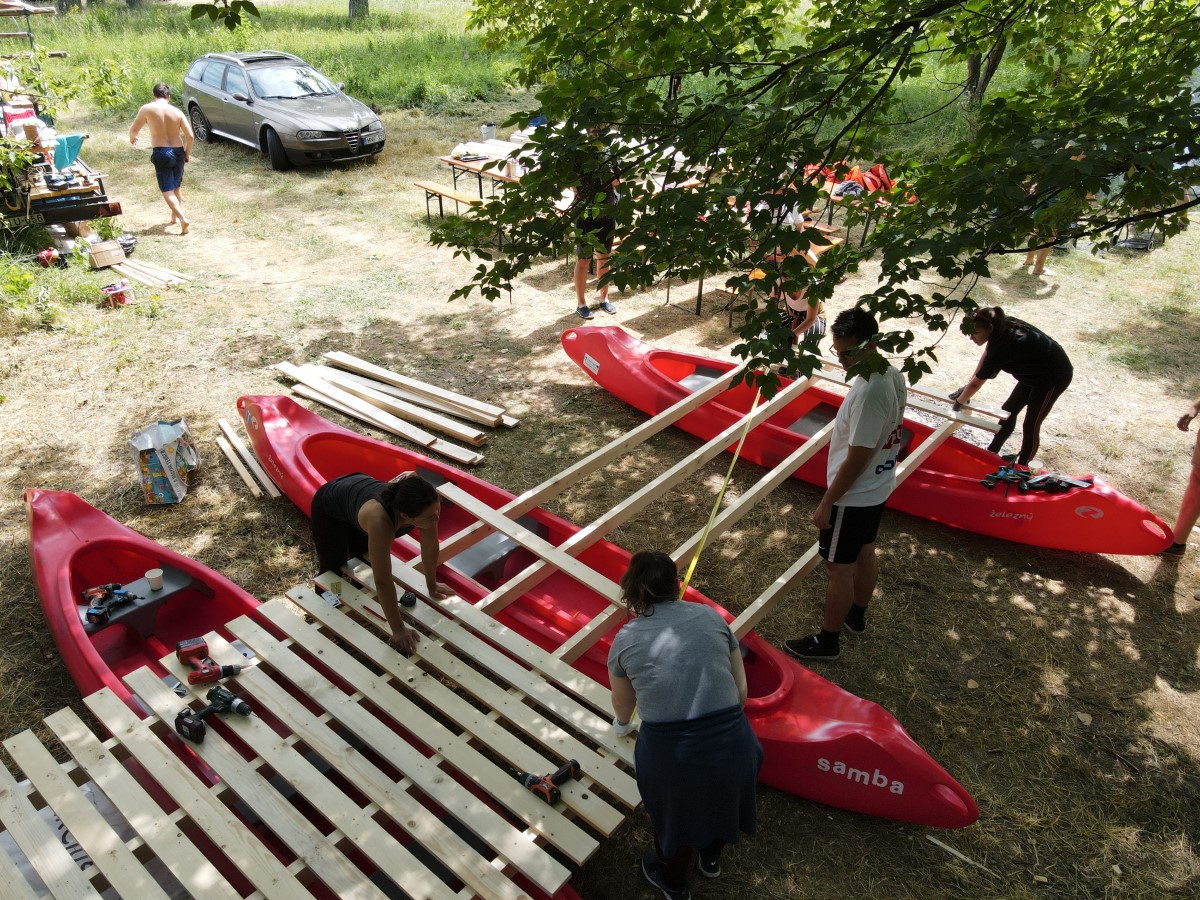
The construction of the bridge was also preceded by a six-month planning process, in which Imre Varga and Bálint Kádár from the Department of Urbanism, and Gergely Kukucska from VALYO assisted the students’ work, supplemented by regular professional consultations with hydraulic engineers and other experts.
At the beginning of the design process, several versions emerged to plan the bridge structure (barrels, various beam and plank divisions, and modular systems), which were eventually finalized on site with continuous live design thanks to the huge and creative teamwork.
The pontoon bridge counterpointed the separation exacerbated by the Covid-19 pandemic. It recalled the current situation, which made all areas of life difficult, especially cross-border relations. The message was clear to the residents as well, there was a lot of curiosity about the afternoon opening and the picnic, the recognition was beyond expectations. Citizens from both sides of the river came on foot, by bicycle, with children, prams, dogs, so the campers could experience the joy of the locals and how much demand there was for this connection between the two shores. And the value of the bridge was only further enhanced by its human scale and temporality, as it was only accessible in one afternoon.
The bridge highlighted the importance of building a long-lasting connection and was a forerunner of the permanent road bridge that is currently being constructed between the two lands. At the pontoon bridge, however, emphasis was placed on the human scale, i.e., the importance of pedestrian and bicycle traffic as opposed to motor vehicle traffic.
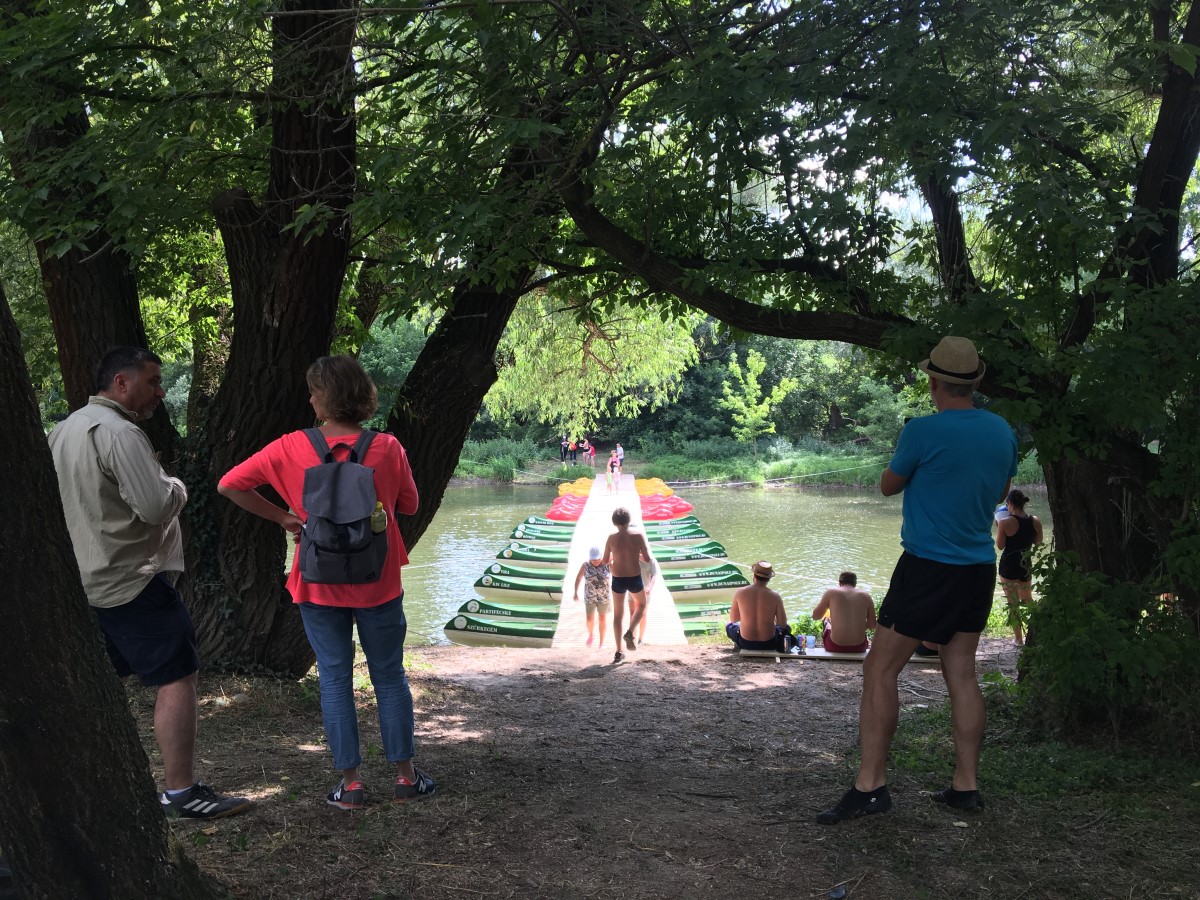
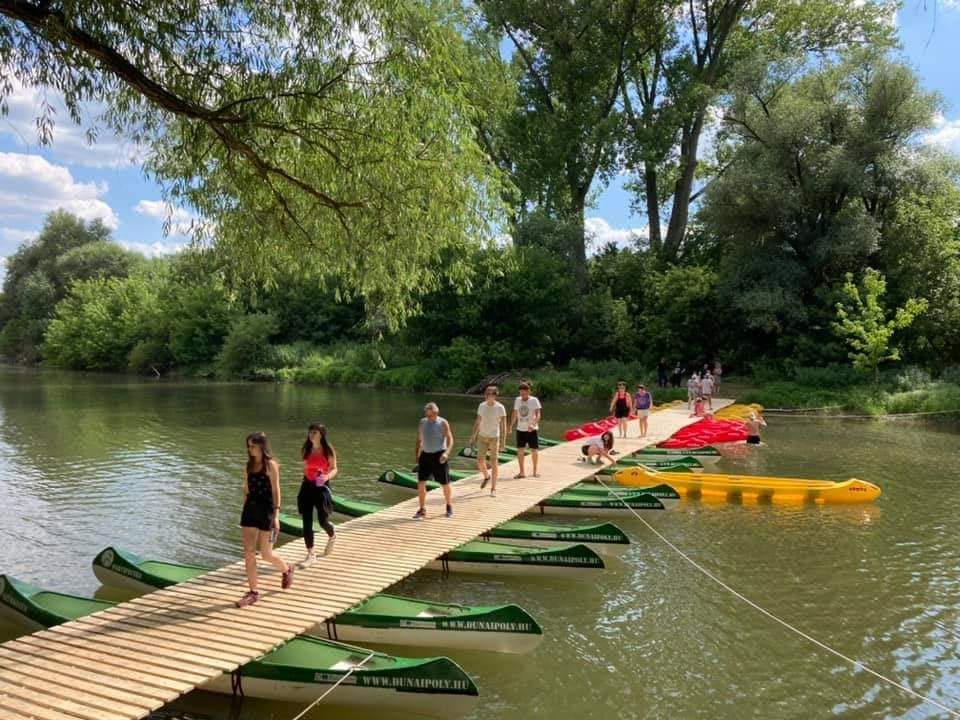
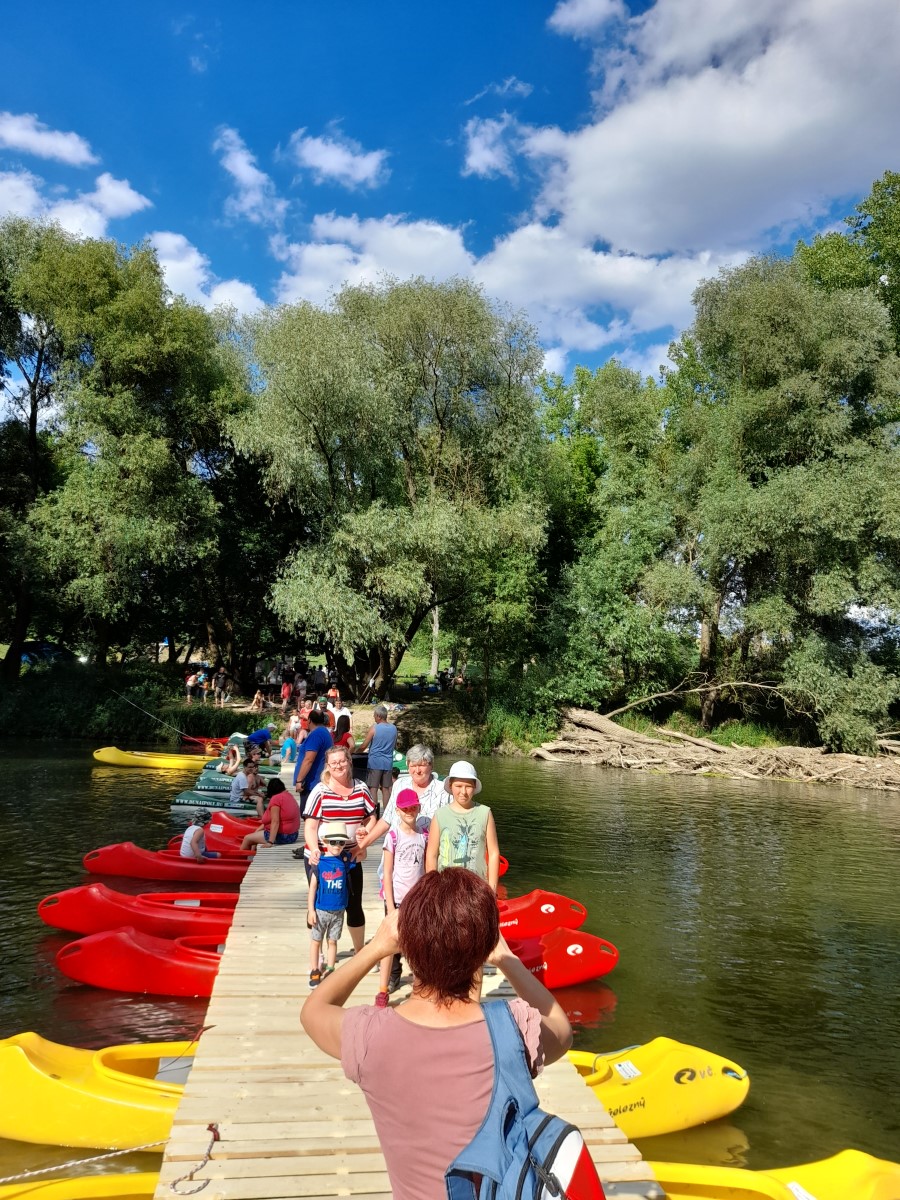
The building camp has been a useful experience for the students. On one hand, it helps to build relationships with each other and their instructors in a more informal way, and on the other hand, it provides valuable professional experience through the preparation and implementation of projects, which are complemented by community and sustainability goals.
The pontoon bridge was dismantled on Monday morning and small groups of students were responsible for making various public furniture/constructions from the wood obtained in Szob, which will be useful in the future and will also preserve the memory of the canoe bridge. These installations and street furniture symbolize the cohesion of the community, as they are made in memory of the bridge and they could be used as for public functions as a fireplace, a bicycle bench, chat rooms (all that can be perceived as community-building).
So, the building camp didn’t end with the construction of the PONTIpoly Bridge, but the students have already gathered a lot of positive experiences from it and are confident that locals will love public installations and street furniture as much as the pontoon bridge.
------------------------------------------------------------------------
Project co-funded by European Union funds (ERDF and IPA).
